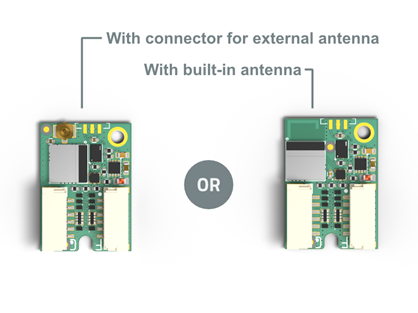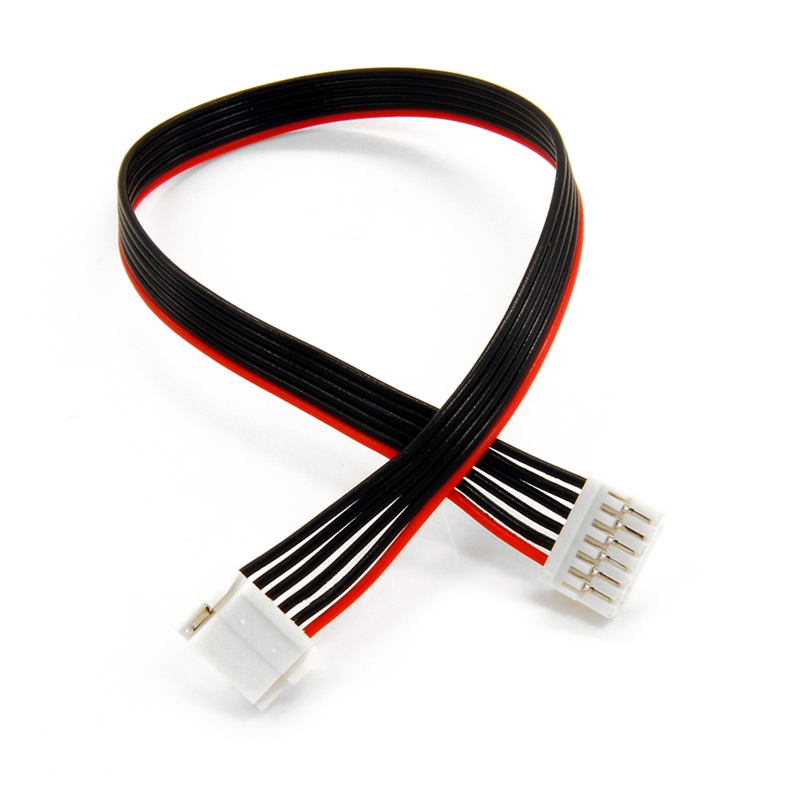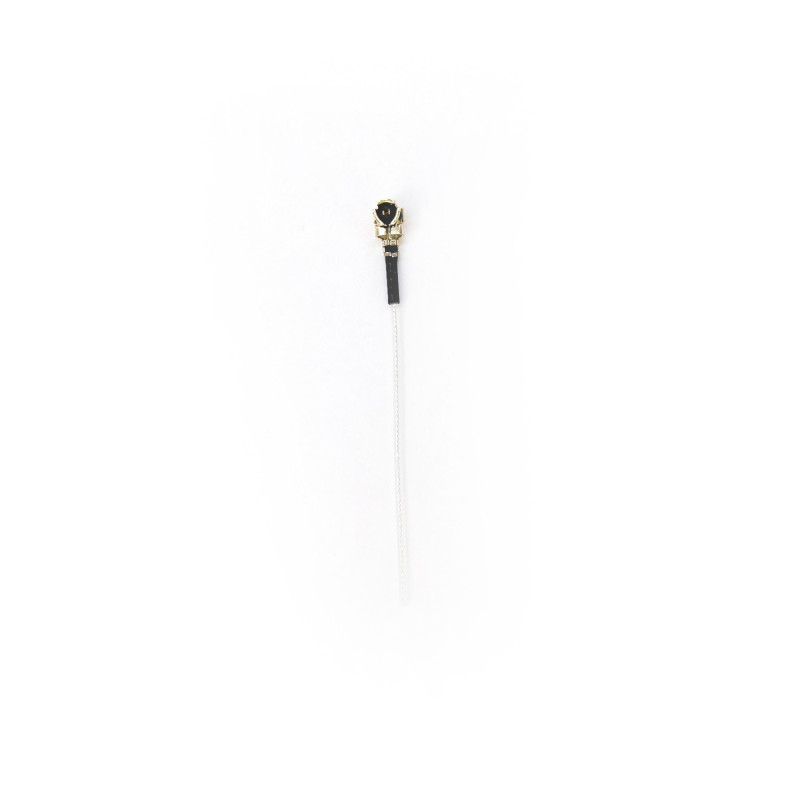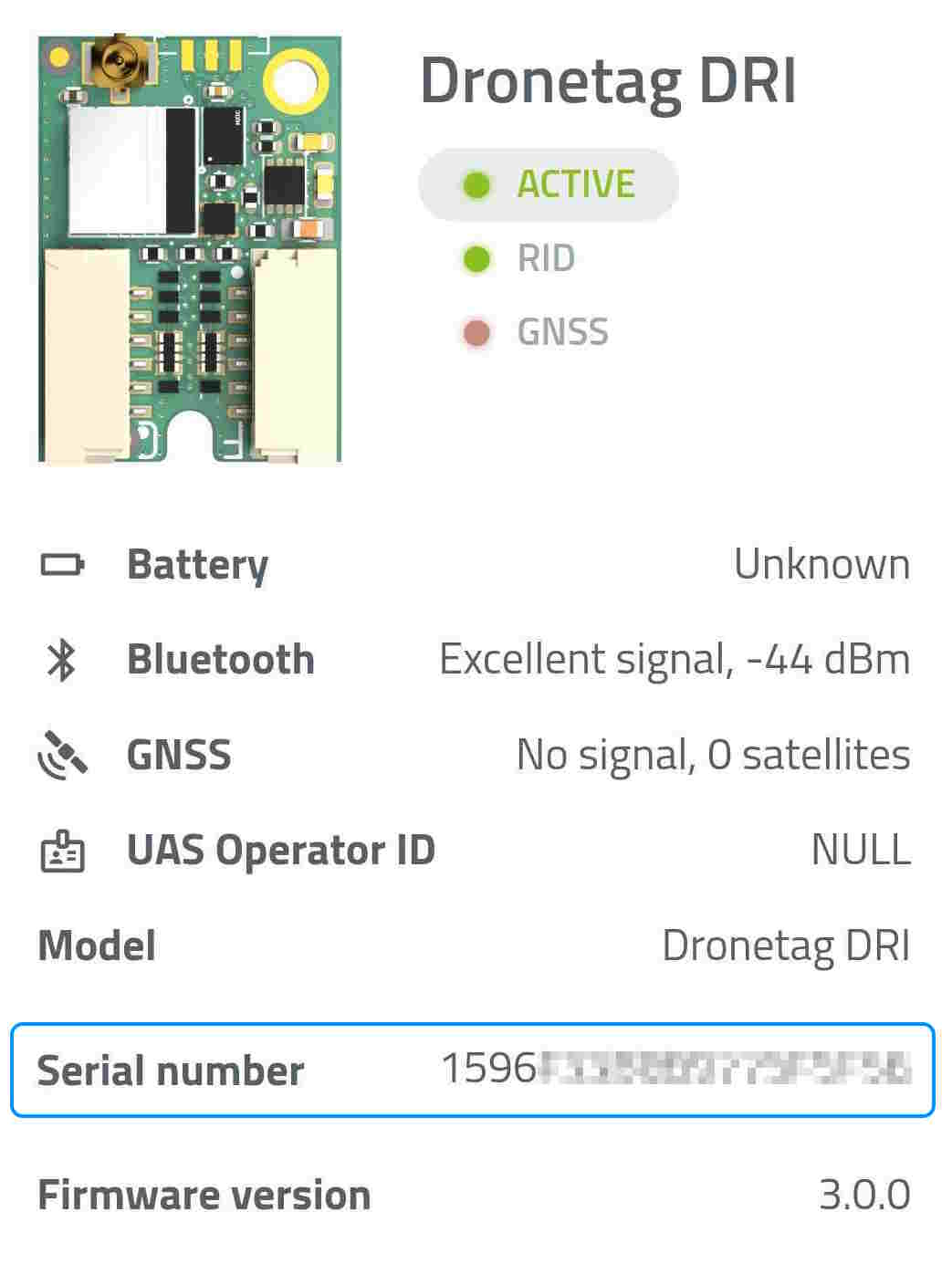Introduction
Purpose of the Dronetag DRI manual
The purpose of this manual is to provide clear and concise instructions for the successful integration of Remote ID functionality using Dronetag DRI. The goal is to meet the Remote ID regulations by the means of a Remote ID Broadcast Module, or Standard Remote ID Drone in the US, defined by FAA or obtaining C-class drone certification in the EU. With complete integration into your drone and flight controller, Dronetag DRI can serve as a Remote ID enabler in countries that accept ASTM F3411 or EN 4709-002 standards, including the USA and the EU.
This manual covers a range of topics, including the technical specifications of DRI and its variants, step-by-step instructions for installation and configuration on your drone, troubleshooting procedures, and guidelines for maintenance of DRI and its upgrades. It is designed to be used as a reference resource by integrators, technicians, and other personnel involved in the integration process.
The manual also includes information on best practices and recommended approaches for integrating DRI into different systems, helping integrators to avoid common pitfalls and ensure that the integration is performed in a smooth and efficient manner. Additionally, it provides information on how to handle any technical challenges or issues that may arise during the integration process.
Overview of the DRI

The Dronetag DRI module simplifies your drone manufacturing process to comply with the latest Direct/Broadcast Remote Identification (RID) regulations in the EU and US. With its ready-to-install design, the DRI module eliminates the need for R&D and testing. Simply connect it to the drone's flight controller to meet the mandatory RID requirements.
DRI transmission is standardized according to the prEN 4709-002 for the EU and ASTM F3411 for the US. Dronetag DRI is compatible with PX4 and Ardupilot FCs (e.g., Pixhawk Cube) or any other MAVlink-based system.
DRI variants
We produce two variants of Dronetag DRI; one that comes with a U.FL connector for an external antenna and the second with an internal antenna already on board. If you integrate DRI into carbon fiber aircraft, the U.FL variant will provide the flexibility for best performance. The internal variant will get you all you need for any outside mounting options on plastic.
Features
Sophisticated UART Bypass / Forwarding
Dronetag DRI will not take away any of your existing ports. Thanks to our UART forwarding feature, you can integrate it between the flight controller and your serial peripheral. Just enable port forwarding in Dronetag App and connect Dronetag DRI between your flight controller and serial peripheral.
Standardized SN
Our DRI module already has ANSI/CTA-2063-A serial number baked inside. Refer to this SN during the compliance process without worries about managing your sequence.
ASD-STAN EN 4709-002 & ASTM F3411-22 compliant
Suitable for all regions adopting any of those standards. Broadcast over Bluetooth 4 & 5 to up to 3 km range (1.86 miles). The distance may vary by the integration level and the position of the DRI on the drone.
What's in the Box
After receiving the DRI package, this should be present:
Dronetag DRI (the variant you have chosen) |  |
Pixhawk 6-PIN GH to 6-PIN GH Cable 10 cm |  |
If you purchase DRI with External U.FL Antenna port package contains:
Bluetooth Wire Antenna |  |
Safety Notices
Dronetag DRI has been created for the most straightforward handling possible. Still, the following safety notes must be followed to reduce the risk of accidents, injuries and device malfunction to a minimum. If misused, it has the potential for causing fire or personal injury. Dronetag is not liable for damages arising from the use or misuse of this product. To help ensure accident-free operation, follow these guidelines:
- This and the Dronetag App manual must be read carefully, and all instructions must be followed. Special attention must be taken to all warnings and precautions.
- The user is solely responsible for the risk while using this device. Dronetag is not responsible for any injuries or accidents that are a result of improper use.
- The input voltage is from 3.3V to a maximum of 17V. We highly advise reviewing this Diagram.
- Do not allow liquid, small particles or other foreign objects to get into the system or accessories.
- Do not expose the system or accessories to high temperatures, high humidity or direct sunlight.
- Keep the system and accessories, including cable ties and fasteners, out of the reach of small children.
- If the system is brought directly from a cold location to a warm one, moisture may condense inside the system. If this occurs, the system may not operate properly. In this case, unplug all cables/accessories immediately and leave the device in a dry place for several hours.
- Stop using the system and disconnect it from any connectors immediately if the device functions abnormally, produces unusual sounds or smells, or becomes too hot to touch.
Serial Number
To get the SN from your Dronetag DRI, you need to use our Dronetag App or the Toolbox App. After plugging the DRI to the power source and its registration in the app, you can manually write down the serial number of your Dronetag DRI.
 |